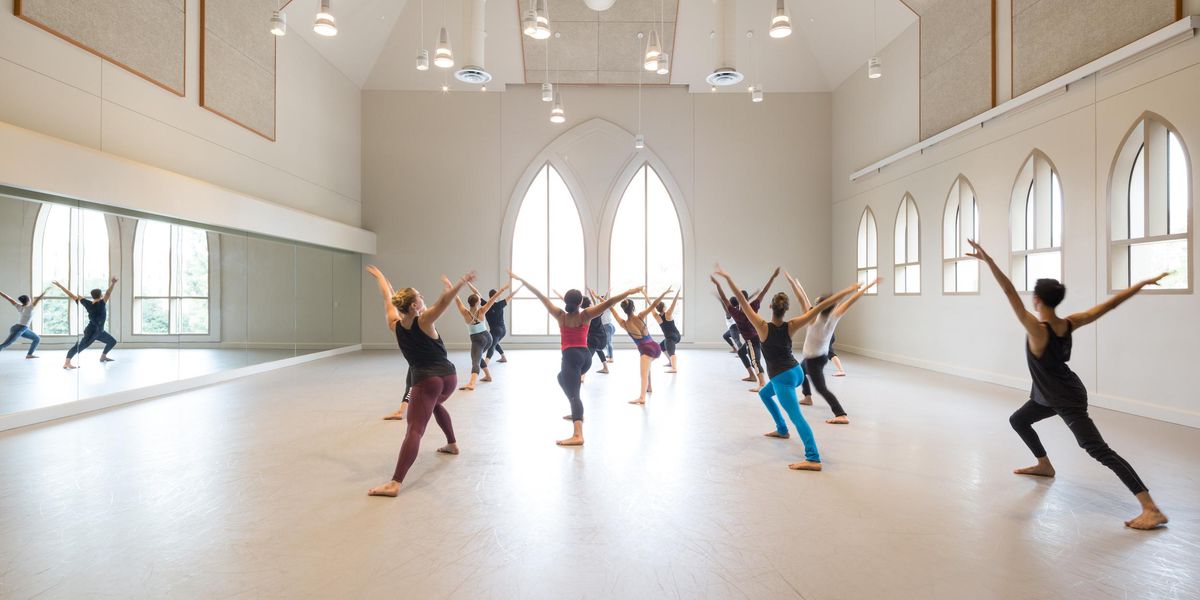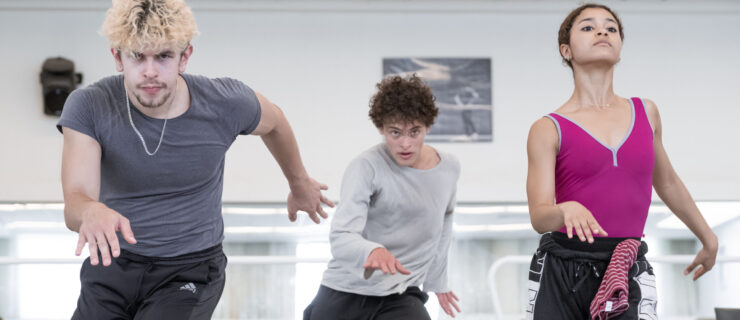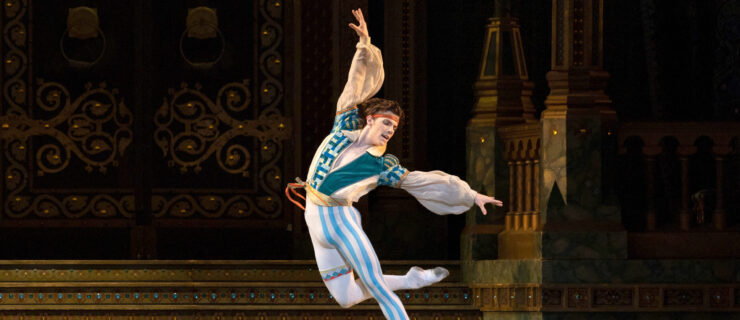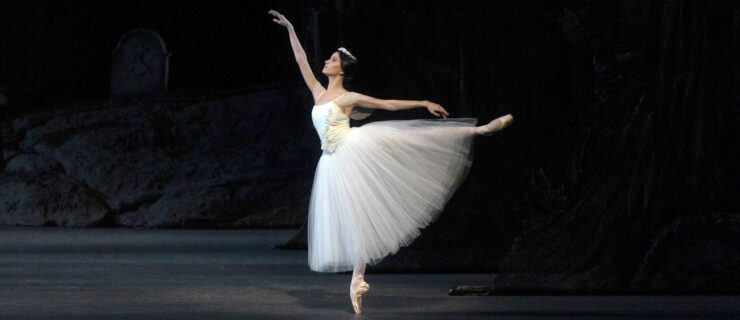Maria Tallchief (1925–2013)
Maria Tallchief as Eurydice in Balanchine’s
Orpheus. Photo by George Platt Lynes.
Maria Tallchief, one of the most celebrated ballerinas of the 20th century, died April 11, 2013, after many years of ill health. Known for the brilliance of her dancing—for her daring, her speed, her musicality, and her showmanship—she burst upon the scene in Balanchine’s Firebird in 1949 to become the first star of the nascent New York City Ballet. As Jacques d’Amboise observed, “Maria and the word ‘grand’ go together as the ballerina best representing classical American ballet. Maria was in the pantheon above Mount Everest.”
Tallchief’s groundbreaking career played a major role in the development of 20th-century ballet in the United States. As a muse to Balanchine in the late 1940s and the ’50s, she inspired some of his most enduring ballets—Firebird, Allegro Brillante, Pas de Dix, Scotch Symphony, and his reworking of Swan Lake and The Nutcracker, among others. Also notable among these early creations was Orpheus, the ballet that was instrumental in the creation of the New York City Ballet itself in 1948. Balanchine had choreographed the role of Eurydice on Tallchief. It is said that her very presence—her personal charisma—was crucial to the new company’s survival and eventual worldwide recognition.
Elizabeth Marie Tall Chief, daughter of an Osage Indian chief and an American mother of Scottish-Irish extraction, moved with her family from Oklahoma to Los Angeles at the age of 8. There she studied ballet with the noted British teacher Ernest Belcher (father of Marge Champion) and with Bronislava Nijinska, Nijinsky’s sister. She was also a serious student of piano. Joining the Ballet Russe de Monte Carlo in 1942 while still a teenager, she immediately attracted critical attention. Two years later, Balanchine arrived as maitre de ballet. According to a 2003 interview with Women’s Wear Daily, soon after she began to work with him, Tallchief said to herself, “I am seeing music. This is it! I was a musician myself, and I thought, ‘I am in my place now.’ I knew that that’s the way I wanted to dance.”
With the Ballet Russe, Tallchief performed solos and leads in several Balanchine ballets, and in 1946 they were married, despite a more than 20-year age difference. With the arts patron Lincoln Kirstein, Balanchine then formed a chamber company, Ballet Society, in which Tallchief danced leads in such famed Balanchine works as Symphony in C (first movement) and The Four Temperaments (Sanguinic). As guest at the Paris Opéra Ballet in 1947, she performed in Balanchine’s Apollo and Le Baiser de la Fée. Then came Orpheus (1948), and soon NYCB was born. A year later, Firebird put the company on the map. In 1951, Balanchine staged his version of Swan Lake, in which Tallchief revealed a new lyricism, and in 1952, his new Scotch Symphony presented her as a radiant, featherweight sylph. Meanwhile she continued to burn up the floor in such pyrotechnical new works as Pas de Dix (1955) and Allegro Brillante (1956), often partnered by André Eglevsky, himself a virtuoso technician. Of that eventful period she later said, “I was in the middle of magic, in the presence of genius. And thank God I knew it.”
Tallchief on the cover of the February 1954 issue of
Dance Magazine, in costume for Balanchine’s Scotch Symphony. Photo courtesy Jacob’s Pillow Dance Festival Archives.
By the end of the 1950s, Tallchief’s important years with Balanchine were over, although she remained with the company until 1965, often leaving, however, to join other troupes. With American Ballet Theatre (1960–62), she danced such blockbusters as the Black Swan Pas de Deux as well as some dramatic roles new to her, including Birgit Cullberg’s Miss Julie and Tudor’s Jardin aux Lilas. She also performed with Rudolf Nureyev, at the time a sensational newcomer, and with the princely Erik Bruhn.
She retired from performing in 1966 and settled in Chicago, the home of her third husband, Henry “Buzz” Paschen, whom she had married in 1956. There she became director of the Chicago Lyric Opera ballet school and founded the short-lived Chicago City Ballet.
Allegra Kent, also a former principal of NYCB, recalls Tallchief’s generosity of spirit: “She wanted the whole company to go forward, not just herself, and she was a wonderful coach. She would come running backstage immediately after a performance to offer me comments on technical and stylistic issues as well as such practical matters as makeup. I used to watch her from the wings. She was spellbinding, even in simple steps, with her magical musical phrasing.”
Tallchief remained faithful to the Balanchine aesthetic for the rest of her life. An appreciation in The New York Times submitted by the George Balanchine Trust referred to her “blazing light, her laughter, and the way she spoke the word ‘George.’ ” During the 1990s she made several videos for The George Balanchine Foundation. These show her coaching some of the great roles Balanchine created on her. Thus she passed on in permanent form a lifetime’s worth of artistry. —Nancy Reynolds
A public memorial took place at the Francis W. Parker School in Chicago on Sunday, May 5 at 3:00 P.M. To support the development of future ballerinas, the family has established The Maria Tallchief Scholarship Fund at the School of American Ballet, where Ms. Tallchief spent many inspired hours as a young dancer. In lieu of flowers, contributions to the Maria Tallchief Scholarship Fund may be made by sending a check payable to The School of American Ballet: 70 Lincoln Center Plaza, New York, NY 10023. Please include “Maria Tallchief Scholarship Fund” in the check memo line.




